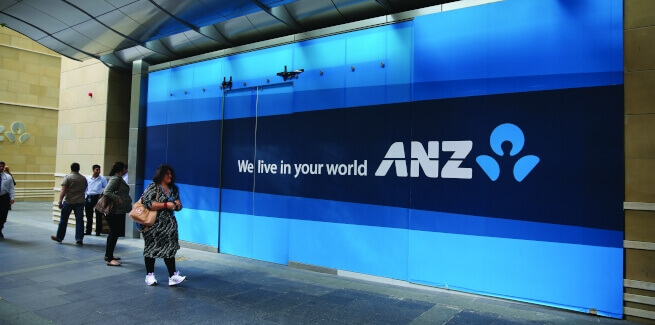Speaking during the opening plenary session at the SWIFT International Banking Operations Seminar (Sibos) in Sydney on Monday (22 October), the CEO of Australia and New Zealand Banking Group (ANZ), Shayne Elliott, noted how technological advances are changing the way banks operate and outlined what ANZ was doing to prepare for the future.
While Mr Elliott said that he did not think it was possible to predict what the next step for banking would be, saying: “I don’t think we’re in a position to be able to say we have any idea what the future looks like, and I, for one, don’t waste my time in trying to predict what it is going to look like other than saying you’ve just got to be ready.”
He added that banks would likely be changing their business models moving forward.
Elaborating, Mr Elliott said: “I don’t know if it is possible to say what the next step is for banking. I think what we’ve seen… when times were different in the past, the universal banking model was very, very attractive.”
Mr Elliott said that many banks had previously tried to broaden their relationships and “add more and more things to do”, but he noted that, “over time, what we’ve found is that the cost of complexity of running that — whether it is a compliance cost or just general cost of having lots of things to do well — has made that less and less efficient or less sensible for many of us”.
He continued: “So, I think as we open up data with open banking, new technology of big data, the cost of digital opportunity has dramatically reduced. I think it starts to throw into doubt that model.
“From our perspective at ANZ, we think that the only way to win in the future is to do a few things and do them really well.”
The ANZ CEO said that he imagined that the issue banks would be “grappling” with now and into the future would involve their sources of competitive advantage.
He warned: “Just turning up and being a bank is no longer a successful model. So, I imagine that there will be people who specialise either vertically — from the customer experience all the way down to data and risk management models or operation expertise — and there will be banks who specialise horizontally as well, in terms of other ways of thinking about [banking].
“I think you’re going to see banks look less and less alike than we’ve become used to over the last 20, 30 years.”
Noting that Australia “has not had a recession since 1991”, Mr Elliott warned of the danger of complacency, telling delegates that the banks are “waking up to the fact that that strategy of the past is not going to work in the future”.
“Banks will look different in the future,” the ANZ CEO said.
“I think it takes a dramatic shift — a reimagining of what customers really want and how you deliver that. A rethinking about what you’re really good at (and that sometimes takes a lot of self-reflection and it has to be an honest assessment of what you’re good at, not what you’d like to think you’re good at), and then working with others to shore up things where we have, perhaps, weaknesses or we’re trying to learn as best we can from others whether they are in the banking industry or not. It does take a shift in mindset.”
He continued: “We need to shift and we need to shift quickly, and we need to do it safely, but we need to do it fast. And for me, that is the big challenge for banks operating in Australia today — whether big or small.”
Mr Elliott concluded: “The people who survive in [a] disruptive world are those who can adapt, and can adapt at scale and at speed. And inherently... large organisations are difficult to change, difficult to change culture, difficult to change strategy, direction etc.
“So, I believe that that is really the challenge, and [the banks] who survive are those banks who are agile and can move at pace and respond to changing customer needs.”
[Related: RC spurs fall in satisfaction with big four]
